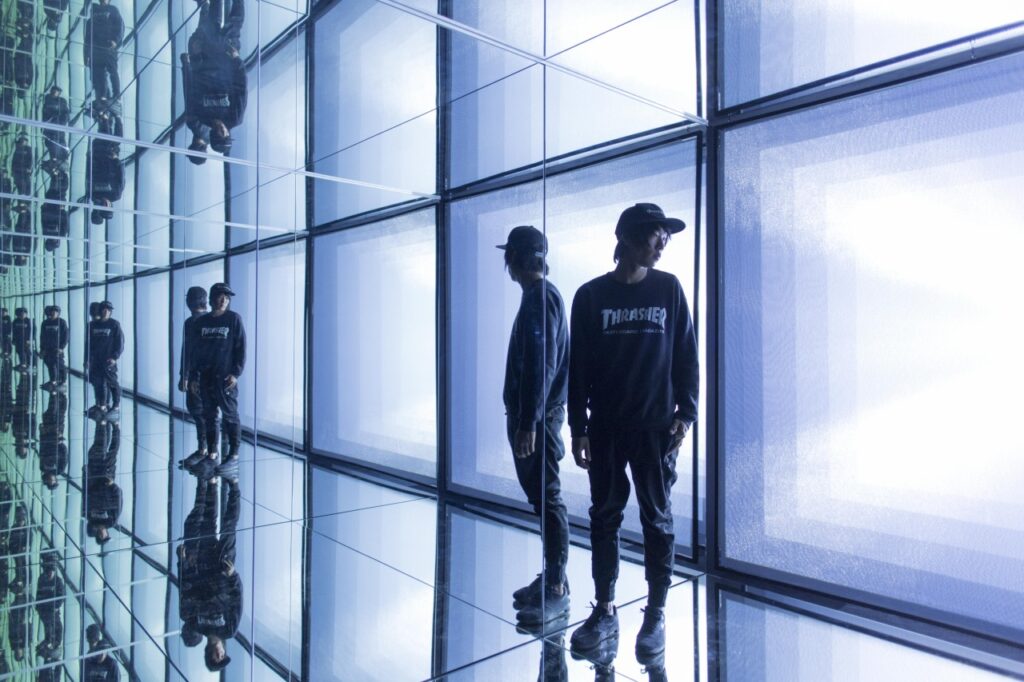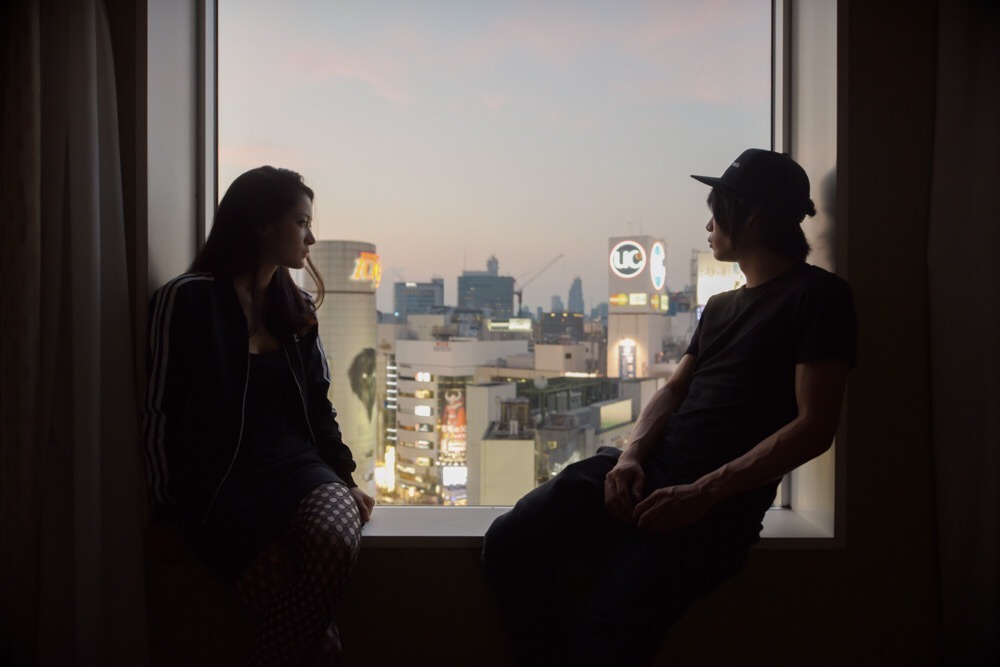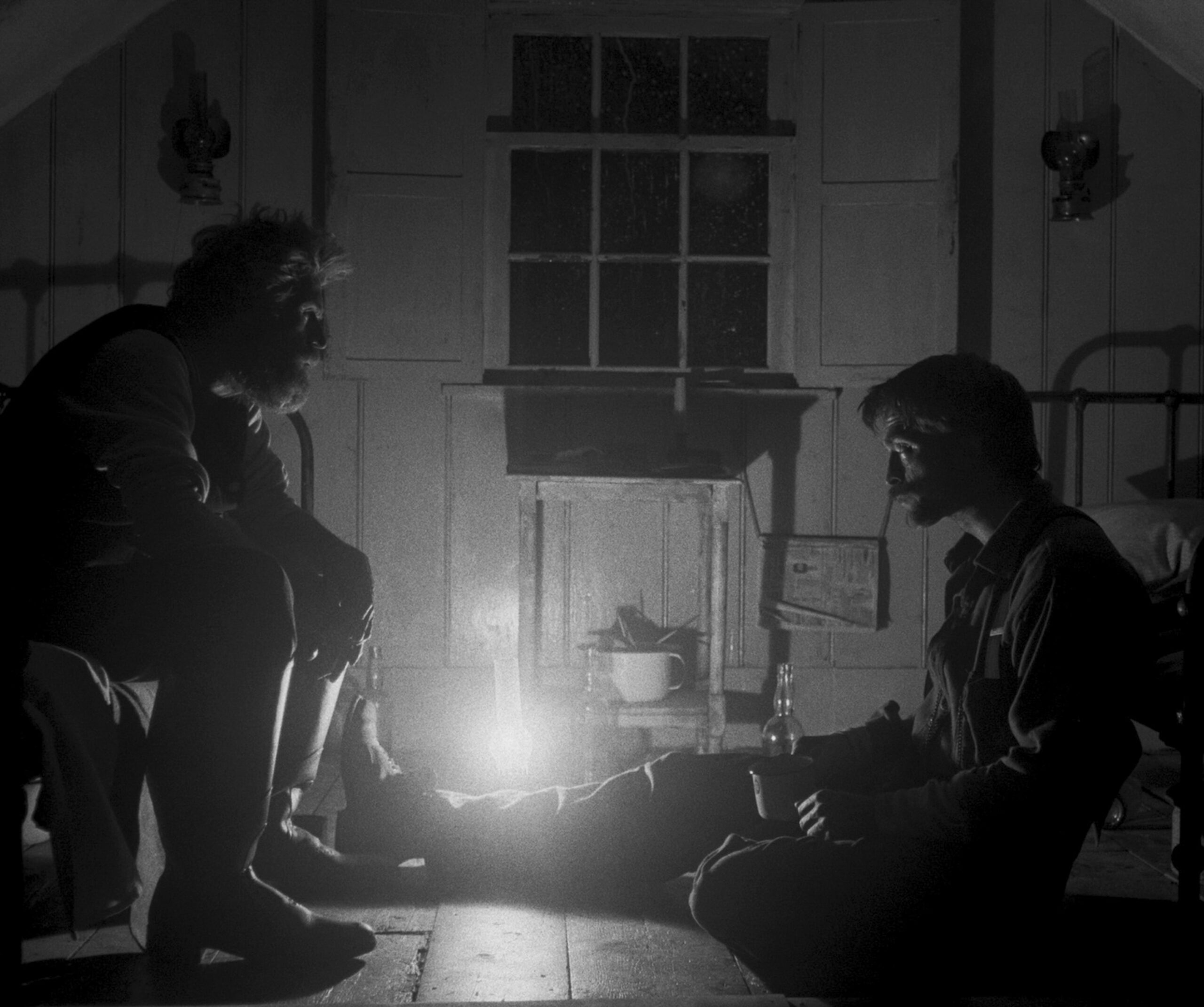Light, sound and space define the work of NonoTakami, the artistic duo formed by visual artist Noemi Schipfer and architect-musician Takamiami Nakamoto. Since 2011, they have been exploring the possibilities of digital art and installations, creating dreamlike and immersive spaces that “interfere” with visitors’ perceptions. Their work draws inspiration from ephemeral architecture and kinetic art, but it transcends anything “already seen,” producing original creations from their minds rather than rehashed concepts. In a double interview, we discussed digital art – now challenged by open software – collaborations and future projects. Notably, they have three permanent works in Japan.

How did the idea of merging light with music come about and what do you want tocommunicate with the experience of your installations?
Takamiami: I personally have been playing instruments and music since I was a kid. Through piano to guitar in bands, etc. While I was studying architecture, music was still part of my life, and many of my architectural projects during school revolved around the idea of creating spaces that played with the visitors’ visual and auditory perception. After a while discovering and experimenting with the close relationship between Space, Sound, and Light, I realized that my architectural projects were mostly sculptural and closer to an art installation environment than a living space. I was actually more inspired by “Pavillon” projects from architects (which is, to me, a sort of architectural sculpture experiment) than actual projects with a defined program. This is the moment I started to get interested in the format of “installation art.” Throughout the journey, I felt like being able to fully express myself through a format that still felt unknown to me, which made it feel special and obsessive. I think what we try to achieve through our pieces is a complete detachment from reality. We don’t have a particular message. We want people to be able to forget the way they are used to feeling space, sound, and light in their daily lives and discover new perspectives but also feel the power of all these three elements combined together to create a fully immersive experience.

Noemi: I come from a visual background, I have loved to draw since I was a child and graduated from an art school in Paris. When I met Takami he was playing guitar in a band. Later, when he graduated in Architecture, we worked on our first project together, a painting for an entrance building in Paris. We had fun doing this project together and wanted to bring our collaboration further, mixing our full backgrounds together: visual, space, and sound. The installation format came pretty naturally to achieve that goal. In our work, we tend to have a really direct contact with the audience. We want to touch people at first sight. The lights allow us to have a really strong impact visually and the sound gives the emotions.

From 2011 to the present, there has been a significant evolution in technology-how have your works changed in this sense?
Takamiami: It was already the case when we started in 2011. I think technology is evolving in a direction where software is more and more versatile and made for “users”. Not necessarily professionals. I feel like we are in an era where “tools” like software are made in order to make an idea reality faster and faster, which starts to bend the notion of “digital art”. Who is a digital artist and who is not? Is the artist coding his own tools the one being able to claim? Is the artist using off-the-shelf software lazy? We feel like the public doesn’t know anymore. In 2011, people really approached digital art as something extremely technical and something that required coding. Of course, installations require a lot of development and programming time, production effort and time, and a lot of laptops involved. But should technology be the justification of our art piece? I don’t think so. And that is why I think it is a good thing that ideas can come to life faster, renders can be rendered faster with better computing power since it will allow people to look at the art and not the technology behind it. Be sensitive to the narration and feelings an art piece provides rather than being excited about a technical aspect of it. I think this is where visual aesthetic and the identity of an artist through the years will make a difference, since technology could evolve, but the aesthetic stays loyal, and this, in my opinion, is something that is important. Our work evolved while technology evolved in the speed at which we can create and render assets, which gives us more time for art. Live shows are easier and less stressful with better computing capabilities, but our vision hasn’t changed much.

Noemi: I’m not coming from a programming/coding background, so the evolution of technology allows us to use those “technologies” in a much easier and more accessible way. From all the software that was developed at that time to the huge amount of tutorials online, I think it gets easier to learn how to start in what is considered digital art. It gets easier to use them as a tool rather than the goal itself and focus on the artistic aspect of it.

How do your installations come about: is the approach collaborative or does everyone play their part?
Takamiami: It is a fully collaborative work. We are duo and we discuss ideas from scratch until it is released.
Noemi: We have been working in a really fusional way since we started. I think one of the keys of our collaboration is that we share the same taste and have a very aligned vision in what we want to create.
From what or from whom do you get inspiration?
Takamiami: Optical Art artists from the 60s, like the GRAV (Groupe de Recherche d’Art Visuel), are something I feel like being the founding fathers of the essence of our work. The concept of creating art that is playful to the eyes and only based on warping the visual perception of the audience is something I feel like belonging to. On top of that, the simplicity of Japanese contemporary architecture and art from architects like SANAA, Sou Fujimoto, Kengo Kuma, and artists like Yoshioka Tokujin and Ryoji Ikeda, is something that resonates with me.
Noemi: A big inspiration for our work is obviously Light in general, how it reacts to its environment or its influences on different materials. Space is also a big inspiration in our work. Usually, the volume of the space dictates what we would like to present. Site-specific installation is also a big part of our project. And if I had to name one of my favorite artists, it would be Ryoji Ikeda.

What do you think are your most successful works and why?
Takamiami: It is hard to scale that. I feel like DAYDREAM is one of our most iconic installations, but SORA has been seen by so many people because of the duration of the exhibition. I never know why people prefer one installation over the other since every time I feel like an installation is going to be understood by many people, it doesn’t. (laugh) Always surprised by one or the other. So we try to not really think about it and always work without having the public’s reaction in mind.
Noemi: It’s hard to choose one, but our installation DAYDREAM is pretty iconic in our work. It’s one of our first installations, and it gave us a great direction in the aesthetic we wanted to develop. I think our performance project is also a big part of our success, from our first live performance LATE SPECULATION to SHIRO. Music plays a huge role in our artwork. Having a live aspect to our work and using our silhouettes as part of the visual element of our installation brings us a lot of opportunities to express our art in different contexts and for different audiences.

What are you working on now, what are your future plans?
Takamiami: We are working on new installations, new live shows, and most importantly, new permanent installations, since this is also the direction we are evolving into. Japan is also a big part of our future since we built a company locally to facilitate more permanent projects like the three installations we just delivered at Shibuya Sakura Stage in Tokyo.
Noemi: This year we released two permanent installations and I think Public art is something we want to develop more in the future. It’s really challenging as the constraints are bigger than something ephemeral but I like to think of something that would be timeless and also touch a huge range of different people.







